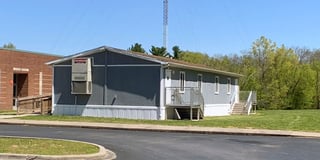
As the demand for education continues to rise, schools are constantly facing the challenge of accommodating an increasing number of students within a limited budget. One innovative solution that has emerged in recent years is modular classroom buildings.
Modular classroom buildings are essentially pre-fabricated structures that can be quickly and easily assembled on-site. These structures are designed to be portable, flexible, and cost-effective, making them an ideal solution for schools that require additional space for their students.
One of the biggest advantages of modular classroom buildings is that they can be customized to meet the specific needs of the school. Whether you need a large classroom, a small office, or a multipurpose space, modular buildings can be designed to fit your unique requirements.
Another advantage of modular classroom buildings is their flexibility. These structures can be easily relocated, expanded, or reconfigured as the needs of the school change over time. This means that schools can easily adapt to changing enrollment numbers or other requirements without the need for expensive renovations or new construction.
In addition to their flexibility, modular classroom buildings are also highly energy-efficient. Many modular buildings are designed to meet or exceed energy codes, and they often use sustainable materials and features such as natural lighting, high-efficiency HVAC systems, and low-flow plumbing fixtures. This can help schools save money on energy costs while also reducing their environmental footprint.
Finally, modular classroom buildings are also cost-effective. Because they are pre-fabricated off-site, they can be constructed much more quickly and efficiently than traditional buildings. This means that schools can save both time and money on construction costs, and they can often have their new classroom space up and running in a matter of weeks rather than months.
Modular classroom buildings are an innovative and practical solution for schools that need to accommodate an increasing number of students within a limited budget. With their flexibility, energy efficiency, and cost-effectiveness, modular buildings are poised to become the future of education.